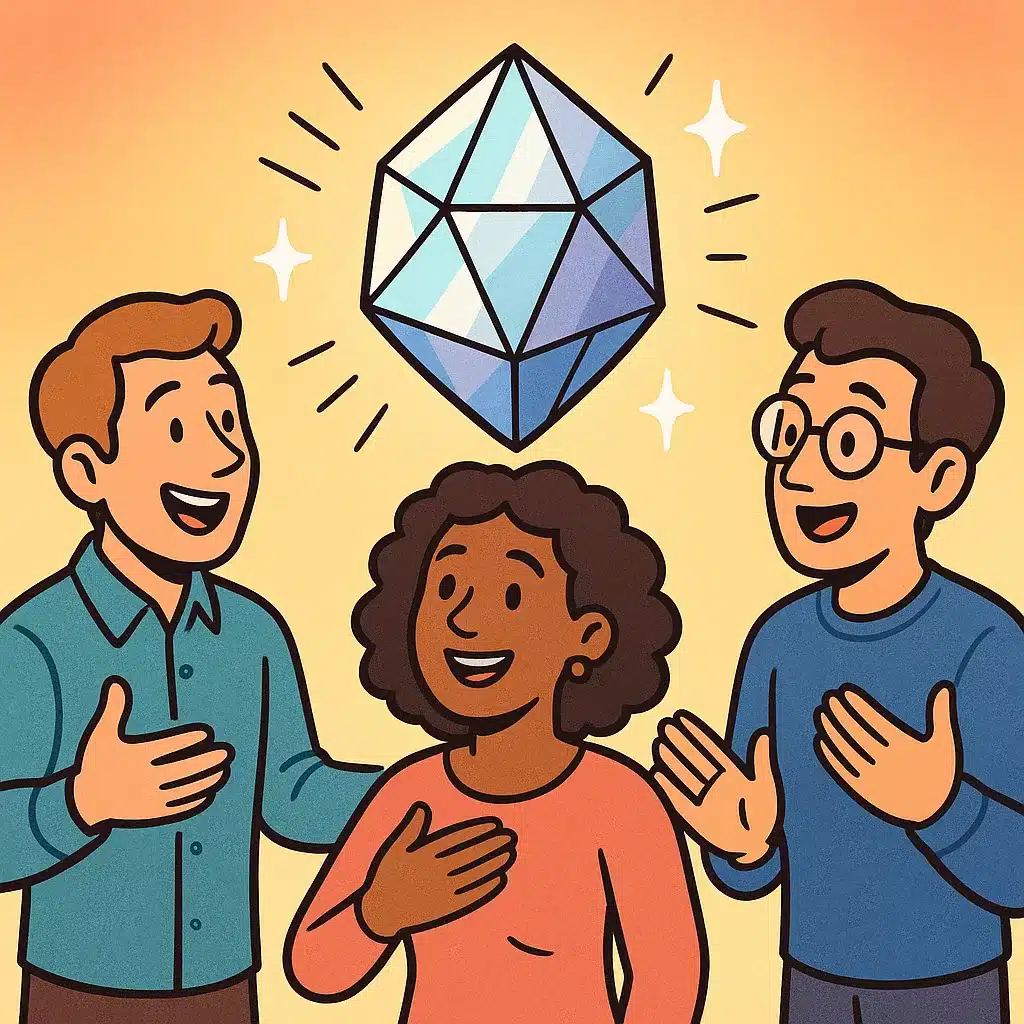In today’s rapidly evolving digital landscape, ideas crystallize through sharing more than ever—especially on emerging prosocial media and focused collaboration platforms where communities shape and refine concepts collaboratively

Why “ideas crystallize through sharing” matters now
The rise of prosocial media
Mainstream social networks are increasingly criticized for negativity and polarization. A shift is underway toward prosocial media—platforms designed for empathy, transparency, and constructive dialogue. Such platforms elevate meaningful content, encourage fact‑checking, and empower communities to co‑create context rather than sensational feed algorithms.
As the digital environment shifts, sharing in a safe, intentional space allows ideas to evolve collaboratively and ethically. That’s how ideas crystallize through sharing: exposure is just the beginning—trusted feedback, refinement, and communal sense‑making seal the transformation.
Niche, curated communities
Large, impersonal networks are losing appeal. Users desire smaller, curated groups where intentions count. A recent study showed that American consumers now gravitate toward meaningful, safe digital communities built around shared interests or values.
In such spaces, ideas get tested, challenged, reframed—and ultimately polished. As contributors engage deeply, an idea becomes sharper, more useful.
The mechanics of idea crystallization through sharing
1. Open collaboration fuels creative momentum
Open innovation and colaborative knowledge-sharing models show that when contributors across boundaries share ideas, they create value greater than the sum of individual insights.
For example, open innovation communities or global idea-sharing platforms let participants propose solutions and receive feedback; this collective exchange rapidly iterates concepts toward clarity.
2. Hybrid platforms amplify trust and scale
A recent review contrasts digital innovation platforms with face‑to‑face environments and highlights the power of hybrid models—combining global scale with relational depth.
In hybrid spaces:
- Digital tools offer asynchronous feedback, broad reach, and data‑driven iteration
- In‑person or synchronous touchpoints (e.g. virtual co‑working sessions, live critique) build trust and nuance
This layered sharing process helps ideas go from rough outlines to well-formed proposals.
3. Niche identity enables deeper exchange
Smaller, theme‑specific platforms (e.g. maker communities, domain-specific forums, prosocial micro-networks) foster deeper input. When people share within a community that knows the context, feedback is targeted and insightful. That depth refines ideas organically.
Emerging platforms & tools shaping this trend
● Prosocial social platforms
Platforms like Bluesky, Threads in the Fediverse, and community tools with “Community Notes” or shared context incorporate transparency and em-pathicity.
Users share ideas knowing others will add context or clarify meaning—not hype or stir conflict.
● AI‑augmented idea networks
Investors are backing niche social apps that combine AI personalization and community engagement. Gen Z and Gen Alpha favor platforms that let users track and share experiences meaningfully, influencing others in curated ways.
AI serves suggestions, but human communities refine the substance—where ideas crystallize through sharing and iteration.
● Collaboration & innovation‑management software
Enterprise tools (e.g. innovation management platforms) are trending toward features that enable shared idea pipelines, voting, refinement workflows, and cross‑team visibility.
These tools structure idea‑sharing so that good concepts rise and improve through collective input.
How to leverage sharing for sharper ideas
Step‑by‑step guide to making sharing work
- Choose the right venue:
- Niche groups for domain‑specific feedback
- Prosocial platforms when you want clarity, not buzz
- Innovation tools for structured refinement
- Share early and openly:
Post concept sketches or questions—not polished statements. Exposure invites feedback early, which keeps refinement efficient. - Invite targeted feedback:
Ask precise questions. Instead of “Thoughts?”, try “What’s missing in this hypothesis?” or “Does this use case make sense?” - Use iteration loops:
Apply feedback, then re‑share revised versions. Multiple cycles help ideas evolve. That’s the core of how ideas crystallize through sharing. - Blend human touch and digital tools:
Host synchronous review sessions (video critique, text discussion) along asynchronous updates. Hybrid interaction helps catch nuance that solely automated feedback can miss. - Document evolution:
Keep a changelog or thread archive—seeing how your idea developed reinforces learning and demonstrates growth.
Real‑world cases: sharing turned into clarity
- Open‑source hardware projects: communities like Thingiverse and Arduino open‑design repositories where designers post prototypes and others build, refine, remix—resulting in better, more usable output.
- Innovation platforms in organizations: Companies running structured idea campaigns (crowdsourced ideation) often report that feedback from diverse internal contributors transforms vague proposals into actionable initiatives.
Why this trend matters in 2025
- Cultural: People crave trust, context, inclusive participation—not sensational feeds.
- Technological: AI amplifies personalization, but human groups ensure meaningful insight.
- Organizational: Distributed teams and open‑innovation models depend on sharing frameworks to convert raw ideas into projects.
When ideas crystallize through sharing, they become robust enough to launch, fund, or scale—because they’ve been tested, refined, and validated by others.
Conclusion
In 2025 and beyond, the best innovations arise not from lone geniuses, but from ideas that crystallize through sharing shared early, refined often, and tested by intentional communities. The myth of the isolated innovator has given way to collaborative reality: breakthrough thinking emerges through deliberate feedback and collective intelligence.
By adopting prosocial platforms, niche forums, and hybrid feedback models, you transform rough notions into clear, powerful concepts. These environments serve as crucibles where half-formed thoughts can be safely exposed to scrutiny and strengthened through collective wisdom. Today’s most transformative innovations emerge from distributed networks operating on reciprocity: contributing to others’ ideas creates expertise that flows back when you need it most. Success requires both courage to share incomplete thoughts and wisdom to seek communities that engage constructively.
References
1. Paulus, P. B., & Nijstad, B. A. (2025). Peers’ ideas enhance creativity in collaborative design: Exposure to peer ideas after sharing significantly boosts creativity. ScienceDirect. Retrieved from https://www.sciencedirect.com
2. Camaraderie through shared thinking enhances innovation. When and how knowledge sharing benefits team creativity: The role of cognitive diversity and knowledge integration. Journal of Management & Organization. (2017). Retrieved from https://www.cambridge.org/
3. Jamali, H., Dascalu, S. M., & Harris Jr., F. C. (2024). Fostering joint innovation: A global online platform for idea sharing and collaboration. arXiv preprint. arxiv.org






